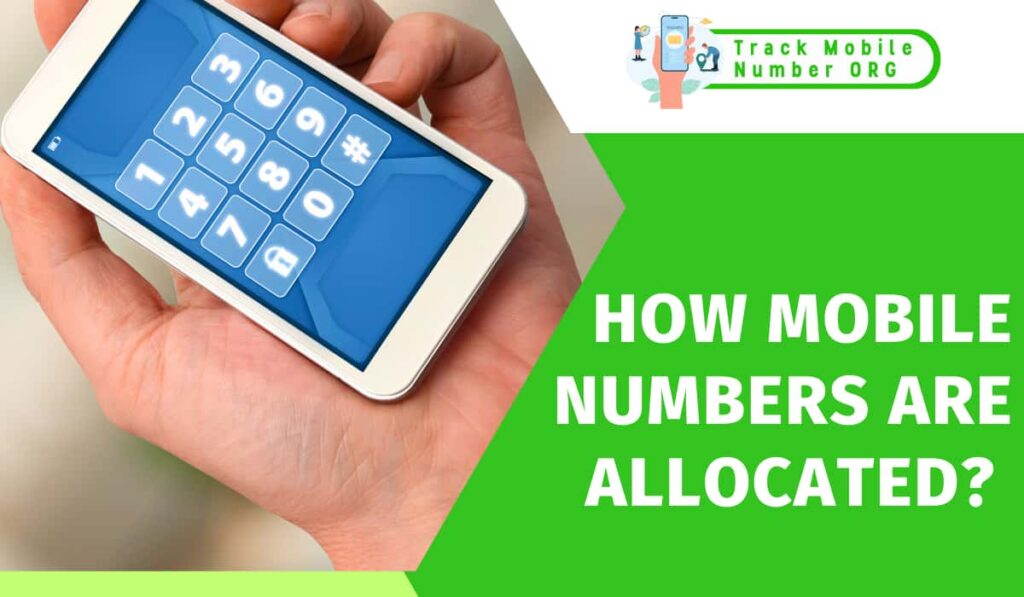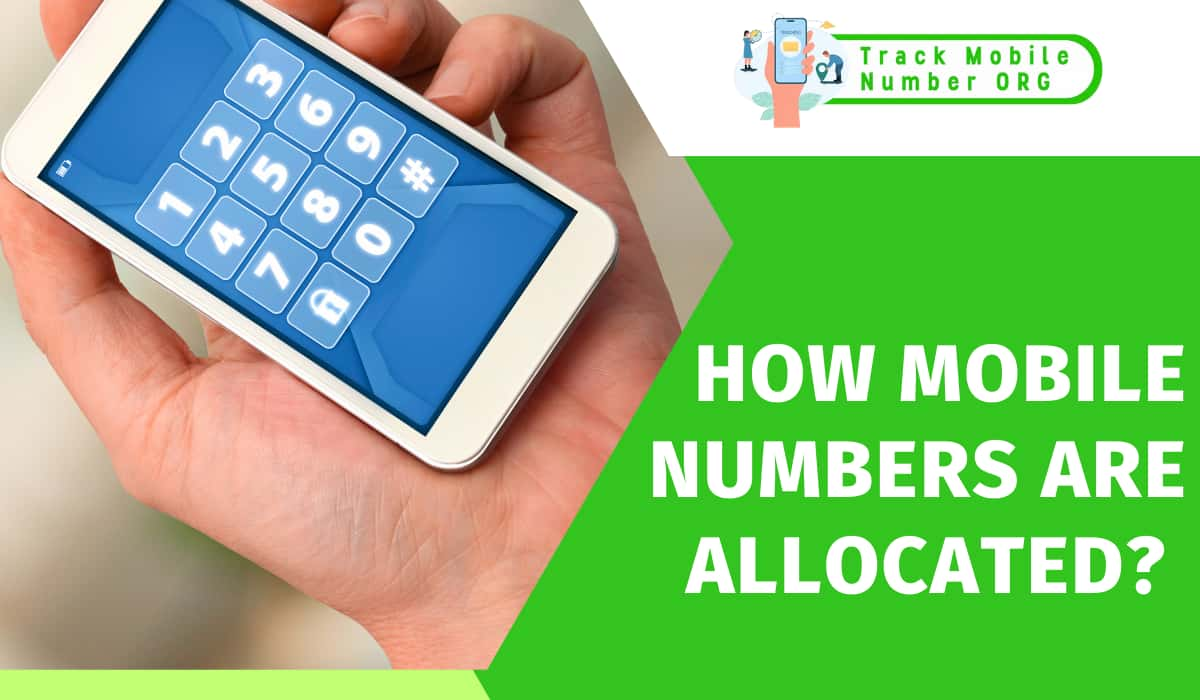Have you ever wondered how mobile numbers are assigned or allocated? We all use mobile numbers daily, whether for calling, texting, or WhatsApp, but not many think about how these numbers are generated and allocated.

So let’s understand this process and learn how numbering systems work in our country and across the world.
The Importance of Mobile Number Allocation
Mobile numbers are used to identify a specific person while communicating. Without a proper mobile number allocation system, there can be a mix-up or overlap of numbers which will create confusion. Mobile numbers should be structured in such a way that they are easy to remember, consistent and follow a logical pattern. This is why every country including India follows specific guidelines for allocating mobile numbers.
How Are Mobile Numbers Structured?
In most countries, mobile numbers consist of a country code, followed by a unique sequence of digits. In India, for example, the mobile numbers follow this format:
- Country Code: +91
- Mobile Number: 10 digits (e.g., 9876543210)
This number is further broken down into different parts and each part has a specific meaning. The first few digits indicate the telecom operator or the region, while the remaining digits are unique to the user.
The Role of the National Numbering Plan (NNP)
In India, the allocation of mobile numbers is governed by the Department of Telecommunications (DoT) under the National Numbering Plan (NNP).
The NNP sets the rules and standards for how mobile numbers are structured and distributed among telecom operators. The Department of Telecommunications ensures that numbers are allocated appropriately to prevent any shortage or duplication of numbers in the future.
How Mobile Numbers Are Assigned to Telecom Operators
The allocation of mobile numbers starts with telecom operators. The DoT divides a large block of numbers into smaller ranges and assigns them to various operators like Airtel, Jio, Vi, and BSNL.
For example, numbers starting with 98 or 99 might belong to Airtel, while numbers starting with 91 or 93 might be assigned to Jio.
Once these blocks are allocated to telecom operators, they distribute these numbers among their customers.
If you buy a new SIM card, the number you get is from the pool assigned to that telecom company. The operator ensures that your number is unique and follows the rules set by the DoT.
What Happens When Numbers Run Out?
With millions of mobile users, it is easy to wonder if we will ever run out of numbers. The answer lies in the NNP’s long-term planning.
The DoT regularly reviews the number allocation system and makes changes if necessary.
For example, if the existing 10-digit numbers are not sufficient in the future, India might shift to 11-digit mobile numbers. This ensures that there are always enough numbers to meet growing demand.
Mobile Number Portability (MNP) and Its Impact
Mobile Number Portability (MNP) allows users to switch telecom operators while keeping the same number.
When this feature was introduced, it added another layer to how numbers are managed. The original operator must release the number, and the new operator takes it over.
Even though the user keeps the same number, it now belongs to a different block managed by another operator. The NNP handles these changes smoothly so that the number allocation system remains intact.
The Importance of Series Allocation in Different Regions
In India, mobile numbers are also allocated based on geographical regions. Some number series are reserved for specific states or areas. This helps identify where or in which state the number was originally issued.
For example, a number starting with 994 might be from Tamil Nadu, while one starting with 983 could be from West Bengal. Regional allocation also helps in managing network traffic better, as operators can balance loads depending on user density in different areas.
Global Numbering Standards
While India follows the National Numbering Plan, other countries have their own systems.
For example, in the United States, mobile numbers are generally 10 digits long without a specific country code (unless dialling internationally). The numbers include an area code, a central office code, and a line number.
In countries like the UK, mobile numbers start with a specific digit (e.g., 07) that identifies them as mobile rather than landline numbers.
The International Telecommunication Union (ITU) set the numbering standards globally. The ITU assigns country codes and ensures that numbering plans are consistent worldwide.
How Are Special Numbers Managed?
Apart from regular mobile numbers, special numbers like customer care, emergency services, or toll-free numbers are also part of the numbering plan.
These numbers are shorter (e.g., 100 for police) and are allocated separately. The DoT reserves certain number series specifically for these purposes to avoid any overlap with regular mobile numbers.
Business numbers, also known as customer care or helpline numbers, are allocated differently compared to regular mobile numbers. These numbers are shorter, easier to remember, and have a specific format. Here’s how the process works:
- Toll-Free Numbers: These numbers are free for the caller. The business pays for the incoming calls. In India, these numbers usually start with 1800.
- Universal Access Numbers (UAN): These numbers are chargeable to the caller but are uniform across the country. In India, these numbers start with 1860.
- Short Codes: These are 3 to 6-digit numbers used for customer care or special services. For example, calling 199 for Jio customer service or sending an SMS to 56789 for a specific service.
How Business Numbers Are Allocated
The process of allocating business numbers involves several steps:
- Application to the Department of Telecommunications (DoT): Businesses, telecom operators, or service providers apply for a business number through the DoT. The type of number (toll-free, UAN, shortcode) is specified during the application.
- Approval and Allocation: The DoT reviews the application and allocates the number from a reserved range. Toll-free numbers like 1800-XXX-XXXX or shortcodes like 199 are assigned based on availability.
- Assignment to Telecom Operators: Once approved, the number is assigned to a telecom operator (like Jio, or Airtel) who then activates it for the business. The operator manages the routing and ensures the number is accessible nationwide.
- Integration with Services: For numbers like those used by Zomato or Swiggy, once the number is live, it’s integrated with their call centres or automated systems.
Example of Business Numbers
- Jio Customer Care: For Jio, a popular customer care number is 199. This is a short code specifically reserved for telecom-related customer care services.
- Zomato Helpline: Zomato uses numbers like 1860-XXXX-XXX for customer support, which is a Universal Access Number (UAN). Calls to this number are charged at regular rates.
- Bank Customer Care: Most banks use toll-free numbers starting with 1800, such as 1800-425-XXXX. These numbers are free for customers calling for inquiries.
Special Allocation for Premium Numbers
Some businesses opt for premium or easy-to-remember numbers, which are more expensive. For example, numbers like 1800-123-1234 are simpler and create brand recall. Businesses pay extra fees to secure these numbers from telecom operators.
How Calls Are Routed
When you call a business number like 199 for Jio, your call is routed through your telecom operator’s network. If it’s a toll-free number, the charges are covered by the business. For shortcodes and UANs, the call is charged based on your telecom plan.
Challenges in Mobile Number Allocation
Managing mobile numbers comes with its own set of challenges. Some of the key issues include:
- Number Shortage: With more people using mobile phones, the availability of numbers can become tight. DoT regularly keeps checking the entire system and it helps them in expanding the pool of available numbers when needed.
- Number Recycling: Operators also recycle numbers, assigning old numbers to new users if they have not been used for a long period. This can sometimes create confusion if the previous user’s contacts continue to reach out to the old number.
- Fraud and Misuse: With the rise of digital services, mobile numbers are increasingly tied to financial transactions, social media, and identity verification. Proper number allocation and tracking are becoming more useful in preventing fraud and misuse.
The Future of Mobile Numbering
As technology evolves, so will the way mobile numbers are allocated. The introduction of 5G and IoT devices may require a larger pool of numbers, and there is a chance that we can shift to 11-digit numbers. Additionally, virtual phone numbers and eSIMs are also becoming more popular. The DoT will likely continue updating the numbering plan to keep up with these advancements.
Table summarizing the key points
This table simplifies the main points that cover both regular and business number allocations for easy understanding:
| Step | Explanation | Example |
|---|---|---|
| 1. Mobile Number Structure | Mobile numbers include a country code (+91 for India) and a 10-digit number. The first few digits indicate the operator or region. | Example: +91 9876543210 (91 is the country code, 9876 indicates operator/region, 543210 is unique) |
| 2. Role of National Numbering Plan (NNP) | DoT manages the National Numbering Plan (NNP) in India. It ensures that the numbers are structured and allocated efficiently. | Example: DoT assigns number blocks like 98XX to Airtel and 91XX to Jio. |
| 3. Assignment to Telecom Operators | DoT assigns blocks of numbers to telecom operators who distribute them to customers. These blocks are based on the operator and region. | Example: Airtel may receive a block starting with 98 for Delhi, which they assign to their customers. |
| 4. What Happens When Numbers Run Out? | The DoT plans for future demand. If 10-digit numbers become insufficient, India may shift to 11-digit numbers. | Example: As more users join, DoT might introduce 11-digit numbers to meet the growing demand. |
| 5. Mobile Number Portability (MNP) | MNP allows users to switch operators without changing their number. The number is transferred from one operator to another while remaining the same. | Example: A Jio number can be ported to Airtel while keeping the original number (9876543210) intact. |
| 6. Series Allocation by Region | Specific number series are reserved for different regions in India. | Example: 994 might be for Tamil Nadu, while 983 is for West Bengal. |
| 7. Global Numbering Standards | Managed by the ITU, global numbering standards ensure consistency for international calls. Each country has a unique system and format. | Example: In the US, +1 555 123 4567 (1 is the country code, 555 is the area code, rest is unique). |
| 8. Special Number Management | Shortcodes, toll-free numbers, and special helpline numbers (e.g., 1800 for toll-free) are allocated for specific purposes like customer care and emergency services. | Example: 1800-425-XXXX for bank customer care; 199 for Jio support. |
| 9. Challenges in Number Allocation | Issues include number shortages, recycling old numbers, and preventing fraud. The DoT manages these by expanding number ranges and ensuring proper tracking. | Example: Old numbers are reassigned if unused for a long time, which could lead to confusion. |
| 10. Business Numbers | Business numbers include toll-free numbers, UANs, and shortcodes. These are allocated based on the type of service and application process through DoT. | Example: Zomato uses a UAN like 1860-XXXX-XXX, while Jio customer care uses the short code 199. |
| 11. How Business Numbers Are Allocated | Businesses apply to DoT for specific numbers, which are then activated and integrated by telecom operators for services like customer support. | Example: A business like Zomato can request a nationwide UAN or a toll-free number for customer support. |
| 12. Future of Numbering Systems | With increasing demand from 5G, IoT, and virtual numbers, the numbering system may expand or evolve, including shifts to longer numbers or virtual solutions like eSIMs. | Example: eSIMs and virtual numbers could lead to new formats or a move to 11-digit numbers in India. |


